
Studio Ghibli’s Other Director: A Read-Alike Guide to the Films of Isao Takahata
For most people in the west, Studio Ghibli is probably pretty much interchangeable with Hayao Miyazaki, its most prolific and well-known director. But while Miyazaki’s brilliance and influence is undeniable (I have definitely brought myself to tears just thinking about Princess Mononoke), there are a good number of Studio Ghibli films that were not directed by him which are just as wonderful and captivating. I especially want to highlight the work of Isao Takahata, an accomplished and renowned director in his own right who was also one of the co-founders of Studio Ghibli. Pre-Ghibli, Takahata and Miyazaki had in fact been collaborators on various projects.
Takahata’s films, which range in both genre and tone, and use varied animation styles, demonstrate his incredible scope as a director and storyteller. In this post, I will introduce each of Takahata’s five films made under Studio Ghibli, as well as read-alikes for each. The hope is that this will not only provide book recommendations for fans of any given movie, but that the selection of books can also act as a guide to the movies themselves for those that are not familiar with them.
Unfortunately, Takahata passed away in 2018, so we have seen the last of his beautiful work, but I urge you all to check out (or revisit) these films, and then the books recommended with them so you can linger within each world even after the end credits roll.
Grave of the Fireflies (1988)
Takahata’s first Studio Ghibli film was originally released as a double feature alongside My Neighbor Totoro. Both are stories about a pair of siblings, but that is pretty much where the similarities stop. Originally based on a semi-autobiographical short story by Japanese writer Akiyuki Nosaka, Grave of the Fireflies follows Seita and Setsuko, a brother and sister trying to survive in extreme poverty in Kobe during the final months of World War II. While this movie is horrifying and tragic, and certainly not for the faint of heart (I grew up with absolutely no censoring of the media I consumed, with the exception of this movie, which my mother did not allow me to watch until I was well into high school), it is also an important perspective on the atrocities of war.
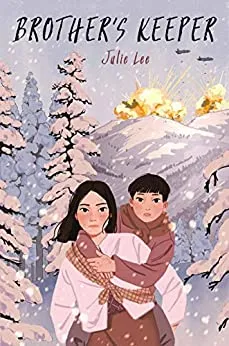
Brother’s Keeper by Julie Lee
Similarly to Grave of the Fireflies, Brother’s Keeper is a novel that follows the harrowing experience of two siblings in wartime. During the Korean War, Sora and her brother Youngsoo try to make it to Busan after being separated from the rest of their family in their attempt to flee North Korea. The book is based loosely on the author’s mother’s own real life experiences, and includes photos and notes at the end that give added weight to the story.
The Last Cherry Blossom by Kathleen Burkinshaw
Another story based on real experiences of the author’s family, The Last Cherry Blossom is about Yuriko, a young girl growing up in Hiroshima as World War II comes to its end. The novel offers insight into the lives of normal citizens during the war, as well as the devastation of the atomic bomb, through a child’s eyes.

In This Corner of the World by Fumiyo Kono
Suzu, a young woman and artist, lives in Hiroshima with her husband’s family during World War II. Even in the face of the inevitable hardship and tragedy brought on by war, Suzu does all she can to live life with fortitude and compassion. Though there are definitely difficult moments in this manga, there is also an undercurrent of hope and warmth that I think make it a good alternative for those who are not up for being completely shattered by Grave of the Fireflies.
For even more books highlighting similar perspectives and experiences of war, you can also check out these YA books about war, or children’s books about the Japanese experience in World War II.
Only Yesterday (1991)
Only Yesterday is about Taeko, a young woman from Tokyo who recalls childhood memories from when she was in the 5th grade while on a visit to the countryside. The film, which is based on a manga by Hotaru Okamoto and Yuko Tone, switches back and forth between the past and present as Taeko reflects on her memories and dreams.
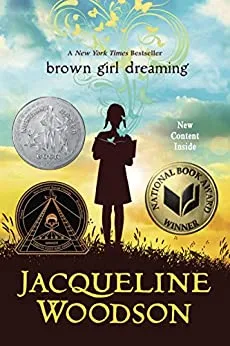
Brown Girl Dreaming by Jacqueline Woodson
Jacqueline Woodson tells the story of her own childhood growing up African American in the 1960s and ‘70s, in both New York and South Carolina, in verse. For me, there is something about poetry that, like memory, feels a little wispy around the edges (in fact, Only Yesterday depicts this visually, subtly differentiating the scenes from Taeko’s memory from the present day), so it only felt natural to include Woodson’s beautiful book here.
Smile by Raina Telgemeier
Here’s another story about childhood, this time in the form of a graphic memoir. Raina just wants to have a normal 6th grade experience, but a fall causes her to knock out her two front teeth, resulting in all kinds of unpleasant dental turmoil. (By the way, this same thing happened to me when I was in the 1st grade. I absolutely do not recommend.) As if that weren’t enough, of course all kinds of other drama also ensues, concerning friends, boys, even a natural disaster! A charming book about finding yourself that also captures just how major everything feels when we’re kids.
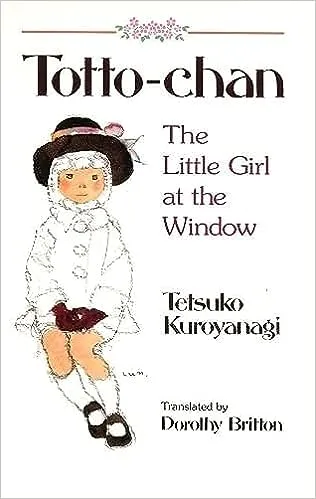
Totto-Chan: The Little Girl at the Window by Tetsuko Kuroyanagi, Translated by Dorothy Britton
Tetsuko Kuroyanagi is a legendary actress and TV personality in Japan. In this memoir, she recounts the period during World War II when she attended an unconventional elementary school, which allowed its students more freedom and flexibility and embraced their differences, in opposition to the more rigid traditional Japanese public schools. It is an appreciation of the values she learned there, as well as of the unorthodox education methods that allowed her to thrive.
Pom Poko (1994)
In Pom Poko, Takahata switches from the realism of his first two Studio Ghibli films to include magical elements. A group of tanuki (Japanese raccoon dogs) learn of a major development project that will destroy their home, and use their shape-shifting abilities — a common tanuki trait in Japanese folklore — to try to stop it. The movie deftly balances a comedic (and even crude — tanuki testicles play a not insignificant role, for instance) tone with thoughtful consideration on issues of urban development and habitat destruction.
Watership Down by Richard Adams
The very first book that came to mind when I was trying to think of readalikes for Pom Poko was this story about rabbits establishing a new home after escaping the destruction of their warren. Though Watership Down and Pom Poko actually differ quite a bit in tone and themes, I think they would make an interesting pair for comparing how western vs. eastern perspectives expand upon the same premise of anthropomorphized animals dealing with the loss of their homes.
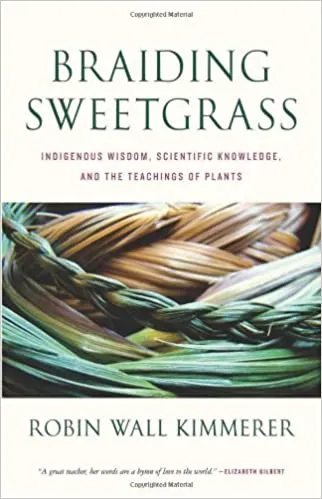
Braiding Sweetgrass by Robin Wall Kimmerer
Robin Wall Kimmerer is a trained botanist and a member of the Citizen Potawatomi Nation. Combining her knowledge from these two viewpoints, Kimmerer offers insight into how we can learn from the natural world to reframe and improve our relationship with it, which I find to be reminiscent of Pom Poko’s ultimate plea to be kind and considerate of the animals and nature that were here before us.
The Overstory by Richard Powers
For a complex and cerebral approach to similar environmental themes, look no further than this Pulitzer Prize winner. The Overstory tells the converging stories of nine Americans and their relationships to trees in a sweeping, innovative saga and ode to nature.
If you’re interested in further similar reading, take a look at these manga with environmental themes, or these novels about the environment from around the world.
My Neighbors the Yamadas (1999)
My Neighbors the Yamadas marks another genre shift as a domestic comedy told in small vignettes about the daily lives of the Yamada family: Takashi and Matsuko, their children Noboru and Nonoko, and Matsuko’s mother Shige. Both the structure of the storytelling and the animation style are unique for a Studio Ghibli film, mirroring the yonkoma manga by Hisaichi Ishii from which it was adapted.
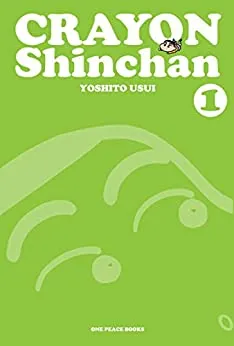
Crayon Shin-chan by Yoshito Usui
Comedic slice of life manga similar to My Neighbors the Yamadas are fairly common in Japan. One example that has been translated to English is the incredibly popular Crayon Shin-chan, which follows the day to day adventures of 5-year-old Shinnosuke Nohara and his family and friends.
Life Among the Savages by Shirley Jackson
Shirley Jackson is best known for her horror writing, but she also contributed short stories to women’s magazines based on her own life with her husband and kids. Life Among the Savages is a fictionalized memoir containing a number of these stories edited together as a collection highlighting how hilarious (and, in its own way, terrifying) the mundane chaos of domestic living can be.
The Wangs vs. the World by Jade Chang
In the wake of the 2008 financial crisis, Charles Wang packs his family into a car and embarks on a cross-country roadtrip from their now-foreclosed home in Bel-Air to upstate New York to stay with Saina, the eldest daughter. Naturally, shenanigans ensue. Need I say more?
The Tale of the Princess Kaguya (2013)
Takahata’s final film (as director) is an adaptation of a Japanese mukashibanashi (literally, “story from long ago”), or folktale, commonly known as “Kaguya-hime” or “The Tale of the Bamboo Cutter.” It tells the story of a princess from the Moon, who appears on Earth as a baby born from a glowing stalk of bamboo. She is raised by a bamboo cutter (who discovered her) and his wife, and eventually attracts five noble suitors. Uninterested in a life of nobility, she turns them away, challenging them to impossible tasks that they are sure to never complete.
Japanese Fairy Tales by Yei Theodora Ozaki
Yei Theodora Ozaki was a translator of Japanese fairytales in the early 20th century. This collection, which includes the Kaguya-hime story as well as many other traditional folktales, was her first major work and continues to be a popular English version of Japanese folklore to this day.
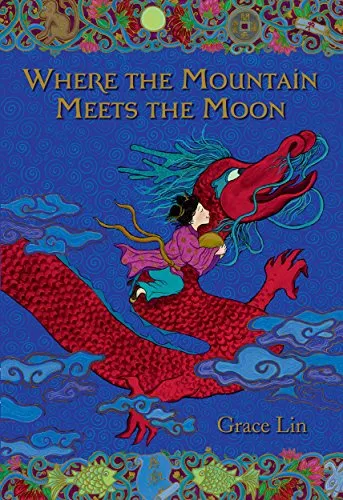
Where the Mountain Meets the Moon by Grace Lin
Where the Mountain Meets the Moon is the first in a series of middle grade fantasy novels inspired by Chinese folklore. Minli, a young girl living in a ramshackle hut with her parents, loves the folktales her father tells her every night. Inspired by these, she sets out on a quest to find the Old Man of the Moon, and try to change her family’s fortune.
Daughter of the Moon Goddess by Sue Lynn Tan (Harper Voyager, January 2022)
Xingyin, a young woman who grew up on the moon, embarks on a quest to save her mother from the powerful and ruthless Celestial Emperor. This upcoming novel (the first in a planned duology), inspired by the legend of the Chinese moon goddess Chang’e, is an enchanting fantasy story, this time for an adult audience.
Folklore is such a rich source of storytelling across cultures, so be sure to peruse this list of 100 must-read fairytale retellings to explore the fantastic range and diversity of stories out there.
And, hey, you didn’t think I’d leave you completely hanging on Miyazaki, did you? Once you’re done taking in the greatness that is Isao Takahata, you’re of course welcome to also revisit Miyazaki’s work. We’ve even got book recommendations for his films as well!










